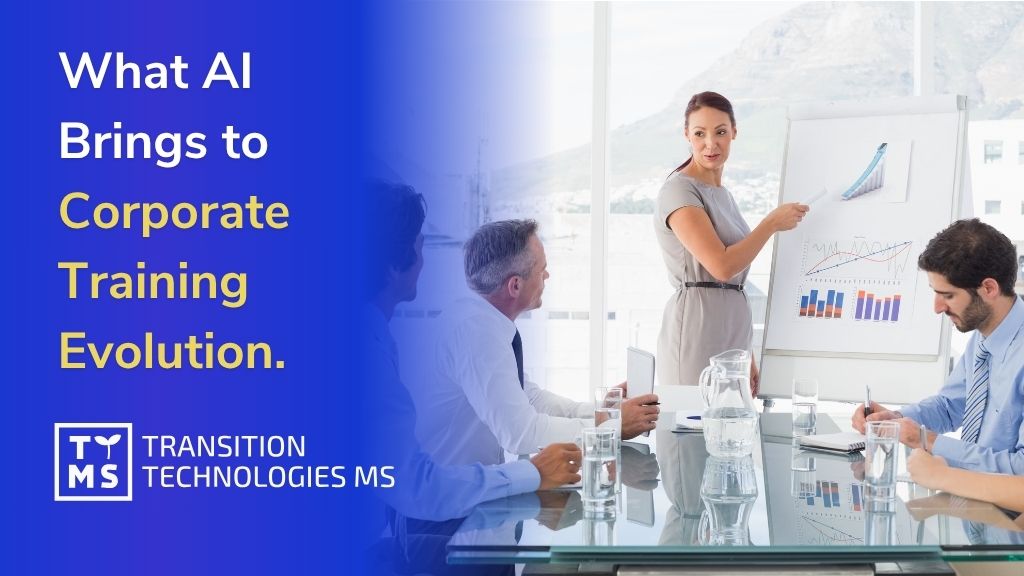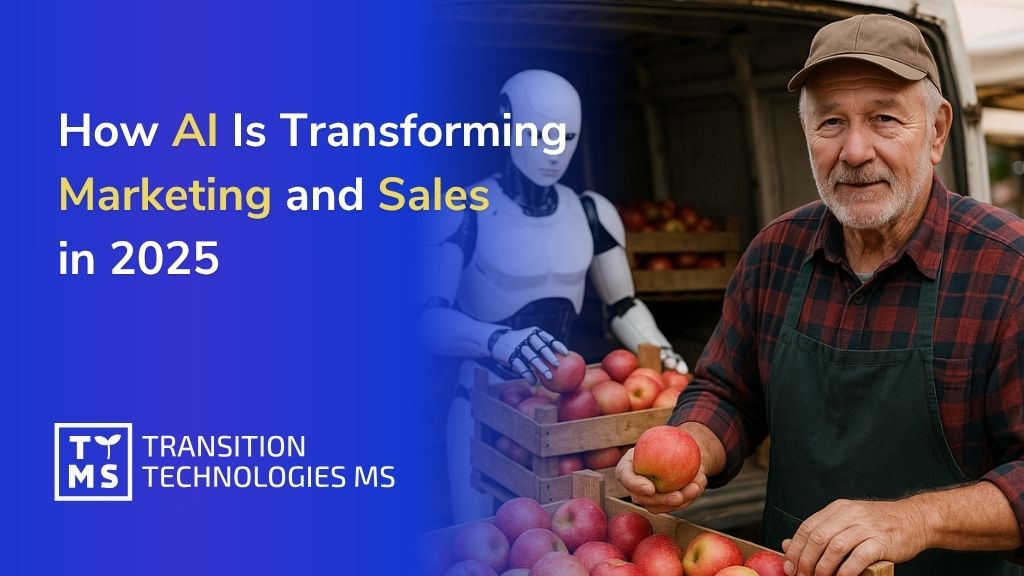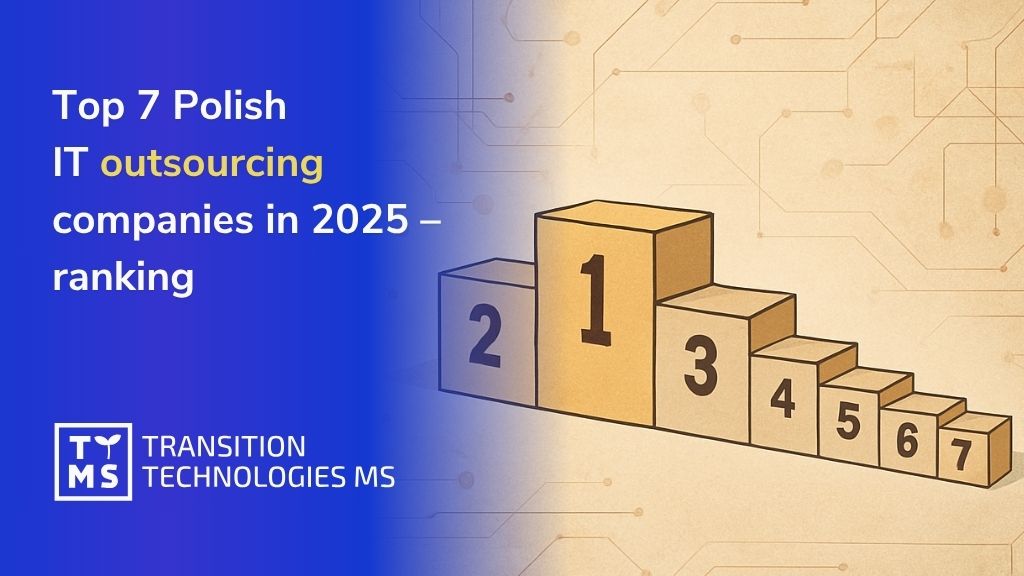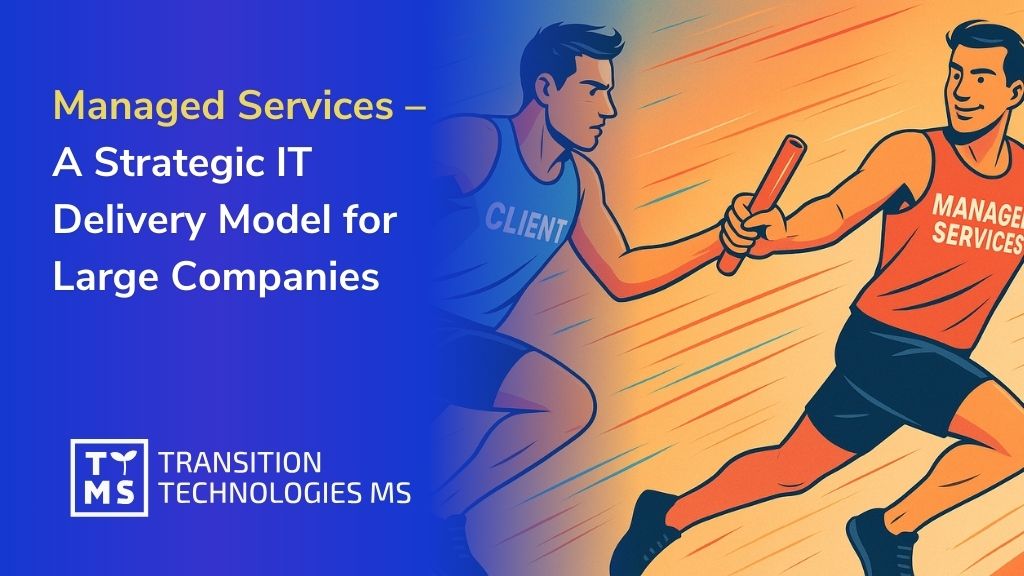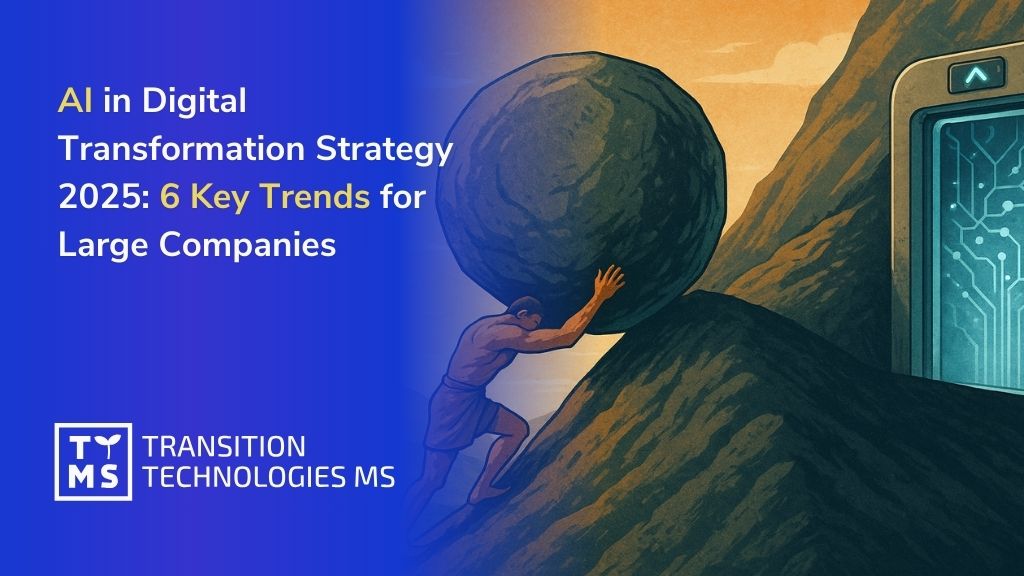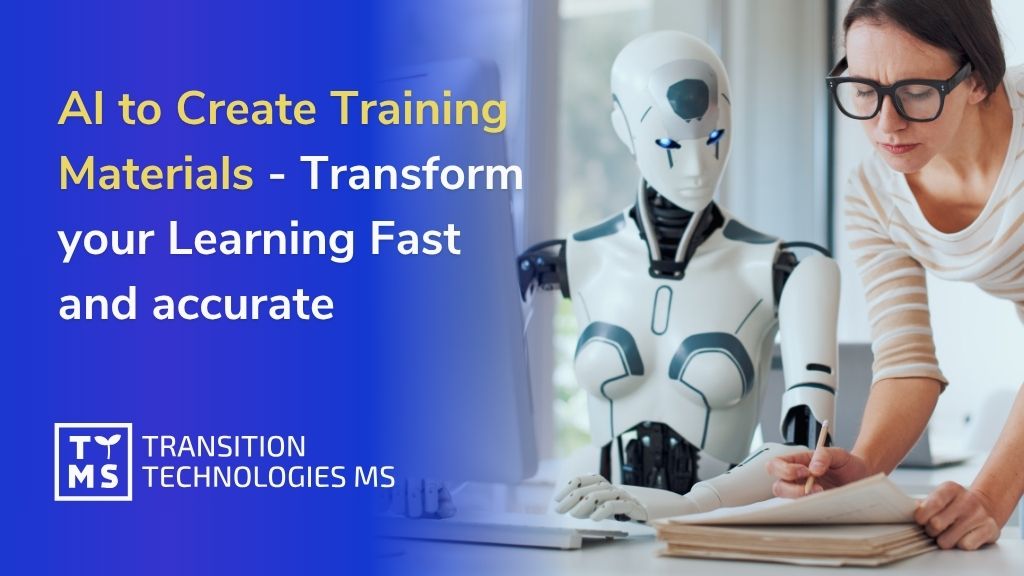AI is the silent hero of HR and L&D departments— it builds training programs, tracks progress, recommends what people should focus on next, and even figures out how to keep them motivated. All without complaining about endless meetings or the lack of coffee in the break room.
These days, when every minute matters and scalability is the name of the game (right alongside “synergy,” of course), getting a grip on AI tools isn’t just a competitive edge — it’s survival.
1. AI-Powered Training Tools – A Look at the Most Interesting Applications
Let’s start at the beginning. It’s hard to ignore the fact that artificial intelligence in employee training and development—though often described as revolutionary—is, at its core, simply a response to the growing demands of modern business. This statement, repeated like a mantra in many corporations, might sound cliché, but today it’s more true than ever.
Choosing the right tools for employee and corporate training is no longer just about cost optimization. It’s a response to the shift in how we work—a shift we’ve all experienced. After the COVID-19 pandemic, remote and hybrid work models stopped being emergency measures and became standard options—or even perks for many. It’s no surprise, then, that training has also entered a new era.
When working remotely, we spend long hours in front of computer screens—writing reports, attending meetings, and handling daily responsibilities, depending on the industry. This extended screen time makes it increasingly difficult to maintain focus for long stretches. So it won’t come as a shock when I say: it’s much easier to stay engaged during a strategic game than while watching yet another “talking head” on a video call.
E-learning and cognitive science experts have known this for decades. Back in the 1960s, the first known e-learning system—PLATO (Programmed Logic for Automated Teaching Operations)—was created at the University of Illinois. While the technology at the time was limited, PLATO did what mattered most: it enabled learning across various subjects with interactive elements between students and instructors via forums, tests, and chats.
Today, both academia and the business world can’t imagine training without e-learning. And now, artificial intelligence is stepping in—reshaping the rules and setting new directions for education and skill development with remarkable momentum.
1.1 Competency Analysis Systems
Competency analysis systems are specialized tools—often integrated with LMS (Learning Management Systems) or HRM (Human Resource Management) platforms—that allow companies to assess employees’ knowledge and skill levels, identify competency gaps, and design effective development actions such as training, mentoring, talent redeployment, or career path planning.
At the organizational level, it becomes crucial not only to monitor current employee knowledge, but also to anticipate risks and potential competency losses that could threaten operational continuity, service quality, or innovation.
These systems also enable competency mapping, providing a broader, more strategic view of knowledge and skills across the company. With real-time insights, organizations can pinpoint where competencies are lacking, in surplus, or unevenly distributed—whether at the individual, team, departmental, or even geographic level.
1.2 AI Learning Assistants and Chatbots
AI-powered learning assistants and chatbots are intelligent tools that support the learning process in a modern, interactive way. Their main role is to guide users through training, answer questions, assist with quizzes, and keep learners motivated. Available 24/7, they allow employees to access support anytime—without needing to contact a live trainer.
An educational chatbot can accompany learners from day one—for example, during onboarding—delivering personalized content tailored to each individual’s progress and needs. It can simulate real-life scenarios (such as customer or auditor conversations), send reminders about incomplete modules, ask review questions, and explain complex concepts in simple terms.
In industries like pharmaceuticals, such a chatbot can play a key role in onboarding employees who work with specialized machinery—explaining calibration procedures, reminding users of GxP protocols, or helping them prepare for certifications. Crucially, these AI assistants learn in real time—analyzing user responses and behaviors to continuously refine and personalize the content.
It’s not just convenient—it’s also highly effective, significantly accelerating the learning process and reducing training costs.
1.3 The Interactive Training Manual – A New Standard in Corporate Learning
Traditional training materials in PDFs or slide decks are quickly becoming a thing of the past. More and more companies are turning to interactive training manuals that actively engage employees, improve content retention, and allow for progress tracking. Powered by artificial intelligence, these manuals can automatically adapt content to the user’s skill level, introduce dynamic quizzes, and provide personalized learning paths.
An interactive training manual can, for example, guide an employee step by step through every stage of working with a specific machine—from preparing the workstation, to starting up, to properly shutting down the production cycle. In such a scenario, the manual might include the following components:
Visual – A 360° virtual tour of the workstation, allowing users to explore the environment, device layout, and critical elements that require special attention (e.g., safety systems, control panels).
Simulative – Interactive simulations where users click through machine components to learn how to start and stop operations, recognize alarms, and respond to emergency situations.
Repetitive/Practice – Interactive checklists for verifying machine readiness before operation.
Assessment-based – Quizzes featuring scenario-based and multimedia questions to test understanding and decision-making.
With AI integration, these manuals represent a significant step forward in efficiency, engagement, and safety in corporate training.
2. AI Course Builders – Smart Tools for Rapid Training Creation
AI course builders are intelligent platforms designed to streamline and automate the creation of training content. The user simply enters a topic or provides basic information, and the system—powered by artificial intelligence—generates the course structure, lesson content, quizzes, summaries, and even visuals and videos.
This is a game-changer for HR teams, trainers, and educators who can now create valuable courses in a fraction of the time—without having to manually craft every component. Thanks to AI, it’s also easy to translate materials into other languages, personalize content for different learners, and quickly update courses in response to changing procedures or regulations.
These tools dramatically reduce the time needed to develop training programs while ensuring they are more engaging, relevant, and aligned with learners’ needs.
3. How to Create Training Materials with AI?
3.1 Define the Training Goal and Target Audience
Before designing a course using artificial intelligence, it’s essential to clearly define its business objective and the characteristics of the target audience. What competencies need to be developed? What challenges is the organization facing? What learning outcomes are expected?
An onboarding program for a new production worker will look very different from an advanced leadership path for a mid-level manager. A well-defined goal helps guide the following steps—especially tool selection and content generation.
3.2 Choose AI-Based Tools
Once you know the type of course and who it’s for, you can begin selecting the right technologies to support its development. The market offers a range of AI tools for generating educational content, creating interactive quizzes, using avatars for video production, and LMS platforms with personalization and data analytics features.
The tools you choose should reflect your specific needs—whether it’s fast deployment, multilingual support, or maximum learner engagement. Increasingly, AI training platforms offer all-in-one solutions that combine several of these capabilities in a single environment.
3.3 Design the Course Structure with AI
At this stage, AI can play a key role in building a logical, engaging course structure. All it takes is inputting the topic and basic objectives, and the AI tool will suggest a module breakdown, key topics, sample exercises, and knowledge-check questions. This initial draft serves as a foundation for further customization to fit organizational needs.
3.4 Generate Learning Content
Once the structure is in place, you can move on to content creation. AI tools can assist with writing lesson summaries, quizzes, checklists, translations, and supplemental materials. For multimedia, AI-generated avatars or animations can help create professional video content without the need for a production studio.
However, it’s important to review all AI-generated content for accuracy—AI may not always reflect the nuances of a specific industry, organizational culture, or regulatory standards.
3.5 Implement the Course in an LMS
The finished materials should be integrated into your chosen Learning Management System (LMS). Here, you define learning paths, set completion criteria, manage content access, and configure how materials are presented.
Modern AI-supported LMS platforms offer features like automated progress tracking, personalized content suggestions, reminders, and adaptive learning experiences. A well-configured LMS is essential for a user-friendly and effective learning journey.
3.6 Pilot Testing and Optimization
Before full rollout, it’s recommended to test the course with a representative user group. This allows you to identify inconsistencies, assess content difficulty, and gather early feedback.
AI can support this phase by analyzing user behavior—highlighting sections where participants struggle or skip content. Insights gained here are crucial for final course optimization.
3.7 Continuous Improvement Through Data
Once the course is live, ongoing monitoring and updates are key. AI tools can help identify users who are struggling, predict dropout risks, and measure the effectiveness of each module.
This enables real-time improvements and helps maintain high engagement levels. Rather than a static product, the course becomes a dynamic, evolving tool that continuously supports skill development across the organization.
4. AI for Course Creation. Can AI-Generated Courses Replace Human Trainers?
AI-generated courses are making an increasingly bold entrance into the world of education and training, sparking both excitement and concern. A common question arises: can their quality match that of materials developed by experienced human trainers?
While AI lacks human intuition and real-world experience, its capabilities are undeniably impressive—especially when it comes to speed and scalability. In just minutes, it can generate a complete course: from structure and educational content to quizzes, animations, and AI-voiced videos. What’s more, this content can be instantly translated into multiple languages, updated to reflect new regulations, or tailored to each learner’s skill level.
However, it’s important to recognize the limitations. AI doesn’t understand the specific context of a company, lacks personal experiences, and often misses the deeper industry nuances. The content it generates can feel generic, lacking the depth or authentic engagement that skilled trainers bring to the table. AI also falls short when it comes to interpreting cultural subtleties or reading participants’ emotions—an essential skill when working with groups. The quality of output also heavily depends on the input: vague prompts will likely result in poorly aligned or superficial courses.
That said, the future clearly points toward human-machine collaboration. Hybrid models are gaining popularity—where AI handles the foundational content, and trainers provide context, lead workshops, moderate discussions, and engage learners in real time. AI won’t replace great trainers—but it can significantly support and elevate their work. It shifts their role from content deliverer to learning experience designer, blending technology with methodology and empathy.
In this new landscape, those open to change and willing to learn will come out ahead. Trainers who embrace AI tools will become more flexible and competitive. HR and L&D teams will be able to respond more quickly to evolving training needs. Employees will benefit from more personalized, on-demand learning experiences. And training companies that integrate AI into their offerings will gain an edge by combining tech-driven efficiency with the human value of connection.
On the flip side, those who ignore the shift risk being left behind. Trainers clinging solely to traditional methods may be phased out. Agencies that fail to modernize will lose their competitive edge. And companies that stick with outdated training systems will move slower and operate less efficiently than their digitally agile peers.
There’s no doubt that AI in training isn’t a passing trend—it’s one of the most important transformations in corporate education. The question is no longer if we’ll use it, but how. Because while technology may be emotionless, when used wisely, it has the power to make learning more human than ever before.
5. AI for Learning and Development. How to Create Effective Training Materials Using AI.
To answer this question, it’s worth turning to adult learning theory—particularly the work of Malcolm Knowles and David Kolb. Experienced trainers know that adults learn best when they understand why they need to learn something, when they can work on real-world problems, and when they learn by doing and through direct experience. Equally important is the ability to control the pace and direction of their own development.
Artificial intelligence can support these needs exceptionally well—provided it’s given the right guidance. Tools like ChatGPT, Notion AI, or Microsoft Copilot can generate course outlines, break them into modules, suggest learning objectives, and recommend exercises. But they rely on well-crafted prompts—clear, thoughtful instructions that set the right direction. The same applies to multimedia creation, assessments, and quizzes: while AI offers immense potential, it still needs input from an expert who can provide context, instructional know-how, and quality source materials.
Personalization and content adaptation is where AI shines even brighter. Modern training platforms powered by AI can tailor learning paths based on test results, user activity history, and even individual preferences. This allows each learner to receive exactly what they need, in the format and pace that best suits their learning style. In this area, AI can take over many of the time-consuming tasks trainers used to handle manually—analyzing responses, adjusting materials, and identifying learner needs. With AI, the process becomes faster, more precise, and effortlessly scalable.
AI algorithms can instantly identify who is stuck, who is disengaged, and who is moving through content quickly. With built-in analytics tools—either as part of an LMS or as standalone systems—organizations can continuously improve training materials based on real data and learner behavior. This marks a new chapter in instructional design—one that is more dynamic, responsive, and effective than ever before.
In summary, for AI-assisted training materials to truly be effective, they must be designed with clear intent and sound instructional methodology. AI isn’t a magic wand—it’s a powerful assistant: fast, versatile, but still in need of direction. You must define your learning goals, ensure the content is accurate and relevant, and thoroughly test everything before rollout. A well-designed prompt can yield excellent results—but a poorly crafted one can lead to generic, shallow, or mismatched content.
6. How to Choose the Right AI Course Maker for Your Company?
Choosing the right AI-powered online course builder is a decision that can significantly impact the effectiveness of training within your organization. To ensure the tool matches your needs, start by clearly defining your training goals and target audience—onboarding frontline workers requires different features than leadership development or specialized skills training.
Next, determine the type of content you want to create—text, presentations, AI-generated avatar videos, quizzes, simulations, or a combination of all. Check whether the platform supports interactive elements or only static, text-based formats. Also, assess the course creation process: does it offer a user-friendly drag-and-drop interface, or does it require technical know-how?
It’s also important to test how well the AI generates content specific to your industry. Some tools are better suited for IT training, others for compliance, product training, or soft skills. Consider whether the builder integrates with your existing LMS, supports multilingual content creation, and offers analytics for tracking user performance.
Don’t overlook critical aspects like data security, GDPR compliance, and technical support—especially if the tool will be used to create internal, confidential, or regulated content. Testing several tools via demo versions and gathering feedback from future users is a smart step before making a final decision.
Ultimately, the best course builder is one that empowers your team—not burdens it. If AI is meant to help, it should be intuitive, flexible, and tailored to the real needs of your organization.
7. When Off-the-Shelf Solutions Fall Short – It’s Time for a Custom AI-Powered Training Tool
For many organizations, standard AI-based training tools can feel too generic, limited in functionality, or ill-suited to internal processes. When available solutions don’t meet expectations—and when your organization is ready to make a strategic investment—it may be time to consider a custom-built platform designed to align with your employees’ development needs and your company’s business goals.
This typically involves partnering with a technology provider that can design and implement a tailor-made AI-enhanced training platform. Such a platform would address your specific requirements around:
Training structure and content (e.g., technical, onboarding, or product-related courses),
Progress tracking and employee knowledge analytics,
Integration with existing systems such as HR, LMS, CRM, or communication platforms like Microsoft Teams and Slack,
Automated learning path customization based on job roles and competency levels,
Compliance with data security policies and GDPR regulations.
Custom solutions allow for precise alignment between learning content and format, and they support advanced adaptive mechanisms—such as personalized learning recommendations, AI chatbots that assist learners in real time, and semantic answer analysis to assess comprehension.
When thoughtfully designed, a bespoke AI-powered tool can become a cornerstone of your organization’s talent development strategy, supporting not just education, but also employee engagement and retention.
8. What to Look for in a Technology Partner When Implementing AI-Based Corporate Training Tools
8.1 Experience and Industry Knowledge
Start by evaluating whether the provider has proven experience implementing AI in the context of corporate learning and development. Ideally, they should offer case studies or references from similar organizations—whether in onboarding, compliance, sales, or technical training.
Understanding your industry means more than knowing the content—it also involves recognizing learner needs, operational realities, and regulatory environments.
8.2 Functional Scope and Integration Flexibility
Equally important is the functional breadth of the solution. A modern AI-enabled learning platform should offer:
Personalized learning paths based on employee performance, engagement, and goals,
Tools to create and manage custom training content,
Seamless integration with existing systems (LMS, CRM, HR platforms, communication tools),
In-depth learning analytics to track progress and effectiveness.
A key question to ask: will this platform integrate with your current infrastructure, or will it force a costly rebuild?
8.3 Technological Maturity and Real AI Functionality
The AI market is flooded with “intelligent” solutions that rely on basic algorithms or surface-level recommendations. Take time to evaluate the platform’s AI engine:
Does it analyze user interactions and responses in real time?
Can it adapt content pacing and difficulty dynamically?
Does it offer chatbot or voice assistant support?
Technology must enhance—not just display—learning. AI should actively guide and engage learners through a meaningful educational experience.
8.4 Data Security and Regulatory Compliance
For any IT solution—especially one that processes employee data—security and compliance (e.g., GDPR, ISO 27001) are non-negotiable.
Ensure that:
Data is stored on servers that comply with local legal requirements,
Processing aligns with your organization’s security policies,
The provider offers audit capabilities and full transparency in data handling.
A well-managed vendor selection process helps avoid costly mistakes and ensures you choose a partner who adds genuine value to your talent development strategy. In times of rapid change and increasing demand for digital skills, a responsible implementation of AI in learning can become a key driver of competitive advantage.
8.5 AI Generated Courses: Game Changer or Just Hype?
If you’re still wondering what value artificial intelligence can bring to your organization when it comes to creating e-learning courses for employees—the answer is clear: the time to act is now. Companies that implement AI-driven training solutions early will not only see higher employee satisfaction but also significantly reduce the risk of staff turnover.
A systematic review published in the International Journal of Environmental Research and Public Health confirms that employees who engage in ongoing professional development experience greater job satisfaction. Moreover, regular training has been shown to support mental health and strengthen team cohesion.
Other studies—particularly in academic settings—highlight that when employers invest in upskilling, employees tend to show greater loyalty to the organization.
The job market is becoming increasingly competitive. In recent years, turnover among specialists has been on the rise, with many changing employers every three years on average. For organizations, this is not just a workforce challenge—it’s a costly one.
By 2025, the total cost of recruiting, onboarding, and training a new employee is expected to reach record highs—factoring in not just HR activities, but downtime, lost expertise, and the need for renewed training investments.
In this context, investing in employee well-being, development, and loyalty is not an expense—it’s a long-term cost-saving strategy.
AI-powered solutions can also dramatically streamline and improve onboarding and role-specific training. Through automation, personalized content, and real-time progress analysis, AI not only accelerates a new hire’s time-to-productivity but also enhances their early experience with the company.
Still unsure whether AI training tools are worth the investment? Let’s look at the numbers.
By EU standards, a large company employs at least 250 people.
The average cost of one hour of employee training in the European Union is €64.
In countries like France (€91), Sweden (€87), and Ireland (€86), that figure is even higher.
A single full-day training session per employee can cost anywhere between €512 and €700—depending on the country, industry, and format.
Now multiply that across the organization. A single team-wide training—for example, on effective communication—could cost up to €175,000. And that’s just one course.
Viewed through this lens, investing in AI-based training tools quickly proves to be not only more efficient but also economically sound. With the power to automate, personalize, and scale content, AI drastically lowers per-learner costs—even from the very first implementation. What’s more, once training materials are created, they can be reused, continuously updated, and tailored to evolving employee needs—without the need to bring in external trainers each time.
9. How TTMS Can Help Reduce Corporate Training Costs in 2025
At Transition Technologies MS (TTMS), we develop advanced AI-powered solutions that support organizational growth across a wide range of industries. In the field of education, we focus on combining the capabilities of artificial intelligence with the expertise of experienced trainers and HR/L&D professionals.
Since 2015, we’ve been delivering modern training tools to our clients—from dynamic animations and interactive learning materials to comprehensive e-learning programs. We design solutions that genuinely engage employees, enhance skills development, and build awareness in critical areas—from soft skills to cybersecurity.
Our training programs, fully compliant with SCORM standards and enriched with AI functionalities, enable organizations to effectively identify and eliminate skills gaps. As a result, we help our clients achieve not only immediate business objectives but also long-term talent development strategies.
Are You Interested in AI Course Creation ? Check out our case studies.
Read more


